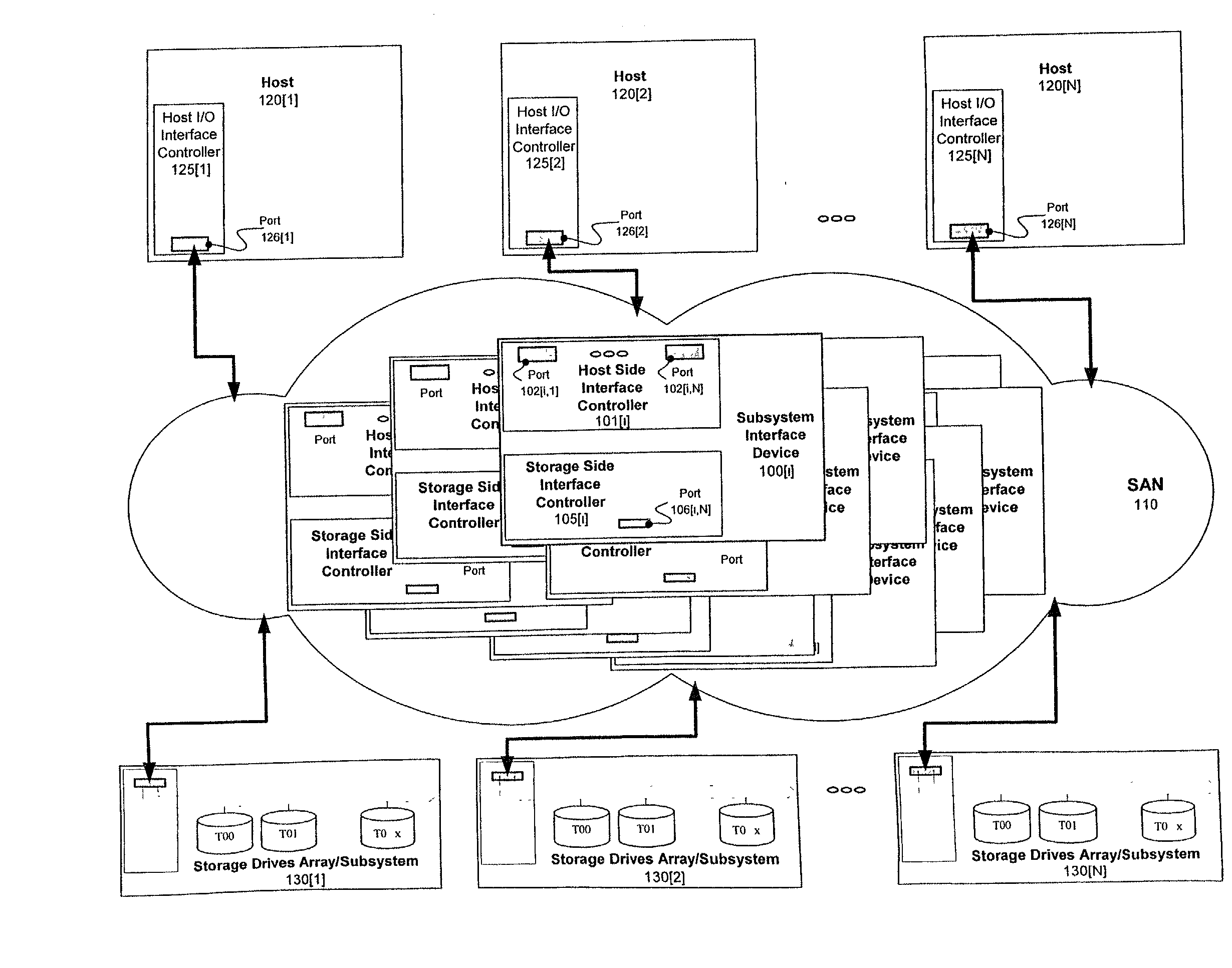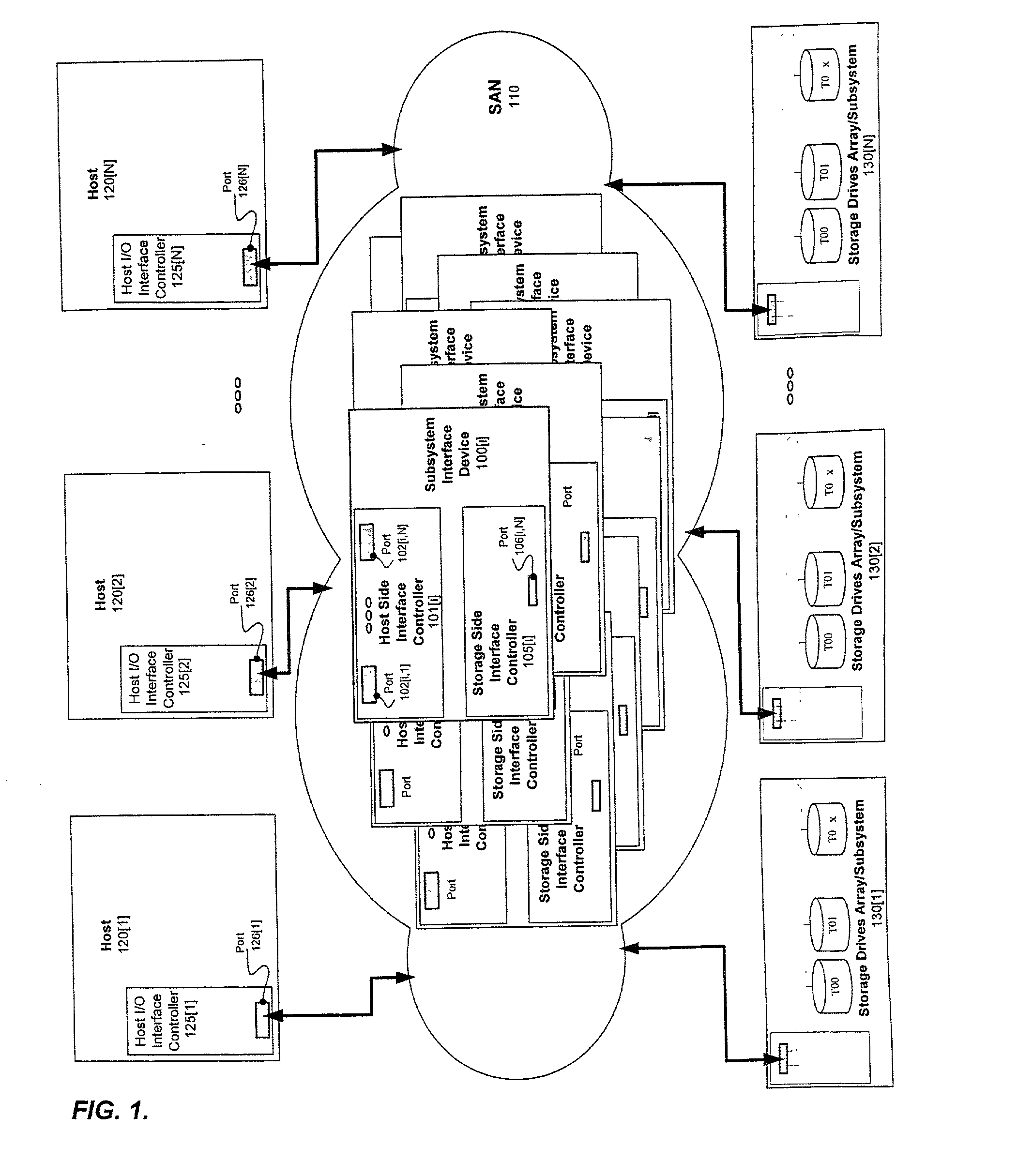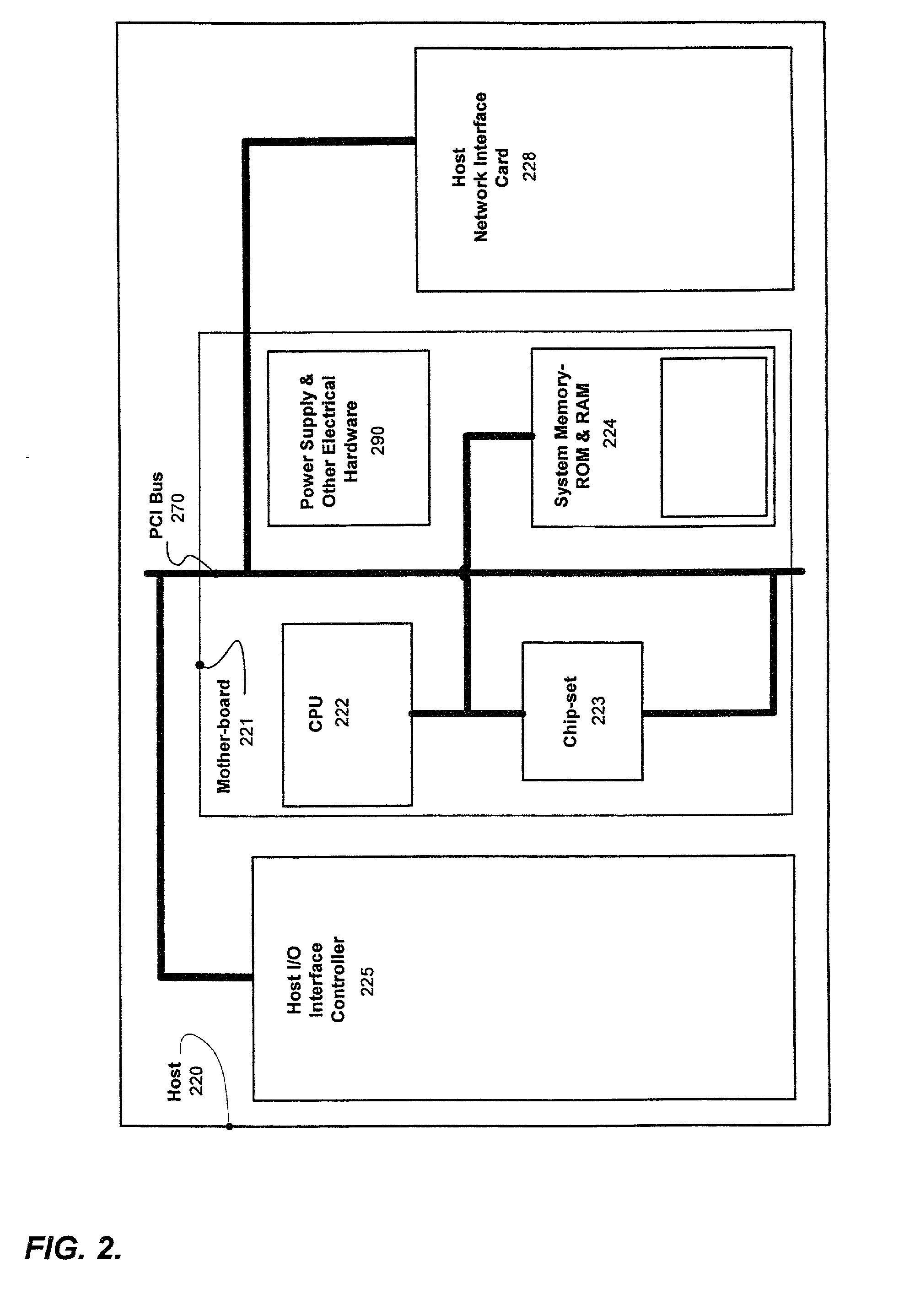Distributed storage management platform architecture
a storage management platform and storage management technology, applied in the field of computer subsystem communications, can solve the problems of failure of common existing implementations of sans, inability to readily support extensibility, and capability that is poorly addressed by host/storage infrastructures
- Summary
- Abstract
- Description
- Claims
- Application Information
AI Technical Summary
Problems solved by technology
Method used
Image
Examples
Embodiment Construction
of Operation
[0277] An individual storage router device employed in the present invention, can be technically categorized by its most rudimentary function, that of a one-to-one layer-3 switch, performing a network layer conversion between storage protocols such as small-computer systems interface (SCSI), fibre channel (FC), Serial Storage Architecture (SSA) and the like. A group of such storage routers in the same domain can be configured to collaborate as a Distributed Storage Management Platform (DSMP). Logically, a DSMP can be conceptualized as a multi-port layer-4 enterprise storage switch.
[0278] Operation of an Example SAN Employing a DSMP Architecture
[0279] DSMP Architecture can be readily employed in a SAN configured in a FC loop topology. The remaining sections of this document describe the firmware-related mechanisms that support such a preferred embodiment, facilitating the vital communications that take place between storage routers, each housing dual-port FC controllers.
[...
PUM
 Login to View More
Login to View More Abstract
Description
Claims
Application Information
 Login to View More
Login to View More - R&D
- Intellectual Property
- Life Sciences
- Materials
- Tech Scout
- Unparalleled Data Quality
- Higher Quality Content
- 60% Fewer Hallucinations
Browse by: Latest US Patents, China's latest patents, Technical Efficacy Thesaurus, Application Domain, Technology Topic, Popular Technical Reports.
© 2025 PatSnap. All rights reserved.Legal|Privacy policy|Modern Slavery Act Transparency Statement|Sitemap|About US| Contact US: help@patsnap.com



